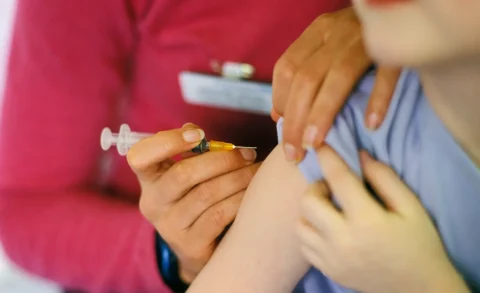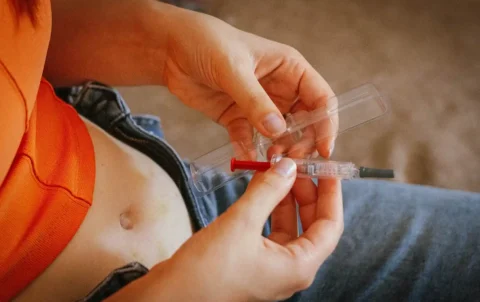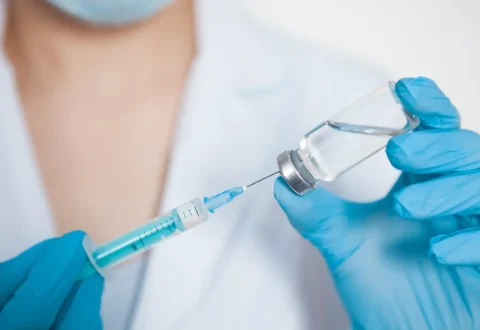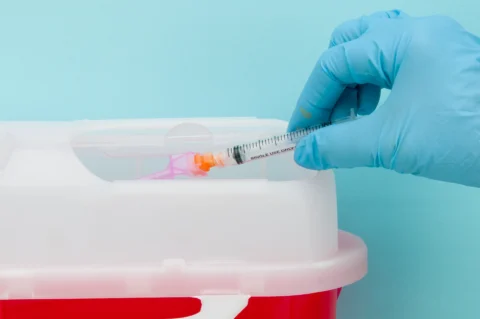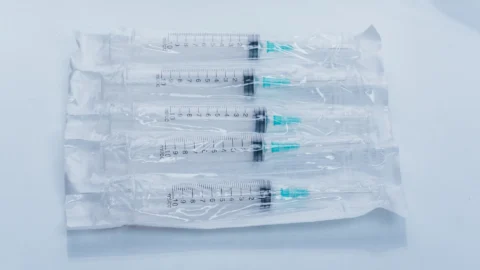Advancing Medical Safety: The Top Hypodermic Needle Manufacturers in the US
In today’s fast-paced world, it’s hard to imagine a time when hypodermic needles weren’t an essential tool in medical practice. These small, thin tubes have revolutionized healthcare by allowing for the efficient administration of medications and vaccines directly into our bodies. They’re also vital for drawing blood samples or injecting fluids like saline solution during various procedures.
But have you ever stopped to think about who makes these indispensable devices? That’s where hypodermic needle manufacturers come into play. It may not be something we often consider, but there are countless companies out there dedicated to producing high-quality needles that meet rigorous standards for safety and effectiveness.
From small-scale local businesses to large multinational corporations, they all have one thing in common: their commitment to providing top-notch products that can save lives every day. In this article, we’ll take a closer look at these crucial players in the medical industry – exploring their history, manufacturing processes, and the challenges they face as innovation continues to shape the future of healthcare.
Top Hypodermic Needle Manufacturers in the US
| Manufacturer | Profile |
| MedPro Safety Products Inc. | Specializes in safety medical devices and their hypodermic needles are designed to reduce the risk of needlestick injuries. |
| Retractable Technologies Inc. | Known for their VanishPoint® syringes and needles which retract into the barrel of the syringe after use. |
| Becton Dickinson & Co. | Global medical technology company that manufactures and sells medical devices, instrument systems, and reagents. |
| Covidien LP (part of Medtronic) | A subsidiary of Medtronic that manufactures medical devices for a variety of specialties including surgery, respiratory care, and vascular therapy. |
| Terumo Medical Corp. | Manufactures a wide range of medical devices including hypodermic needles, syringes, catheters, and blood bags. |
History Of Hypodermic Needles
The history of hypodermic needles can be traced back to the early 19th century, with significant needle evolution and material advancements occurring over time.
The concept of injecting substances into the body using a hollow needle was first introduced by Charles Gabriel Pravaz in 1853, while Alexander Wood developed the first true hypodermic syringe that same year.
These initial inventions were made from materials like silver and glass, making them expensive and difficult to produce on a large scale.
As technology progressed, so did the development of hypodermic needles.
Material advancements played a crucial role in their evolution; stainless steel became widely used for its strength, durability, and affordability compared to previous metals.
Plastics emerged as an affordable alternative for disposable syringes starting in the mid-20th century.
This shift towards cost-effective materials revolutionized medical practices globally and allowed for greater accessibility of these essential tools to healthcare professionals worldwide.
Production Techniques And Quality Control
As we delve deeper into the world of hypodermic needles, it’s essential to understand how modern production techniques and quality control measures have evolved since their inception. Advancements in these areas not only ensure patient safety but also contribute to the overall efficiency and effectiveness of medical procedures involving injections.
A key aspect of producing high-quality hypodermic needles is selecting appropriate needle materials that are both durable and biocompatible. Stainless steel is commonly used due to its strength, resistance to corrosion, and ability to maintain a sharp edge.
Another important factor in manufacturing is implementing stringent sterilization methods such as autoclaving or ethylene oxide gas treatment to eliminate any potential contaminants present on the needle surface. Quality control measures involve inspection for defects like burrs or deformities, ensuring proper gauge size, and checking for consistency in bevel angle across different batches.
This attention to detail results in reliable products which provide consistent performance during use by healthcare professionals worldwide.
Challenges In The Medical Industry
It’s no secret that the medical industry is constantly evolving, presenting a unique set of challenges for hypodermic needle manufacturers. Innovations in materials and design are essential to meet the ever-growing demand for safe, effective, and easy-to-use devices. Among these hurdles are concerns surrounding needle disposal and infection prevention.
As we dive deeper into the various obstacles faced by manufacturers, it becomes apparent that addressing issues related to waste management and safety can be quite daunting. To paint a clearer picture, let’s examine some key aspects within this realm:
| Concern | Impact | Solution |
| Needle Disposal | Environmental pollution & potential harm to sanitation workers | Implementation of proper sharps containers & recycling programs |
| Infection Prevention | Spread of bloodborne pathogens & risk to healthcare professionals | Adoption of retractable needles or needleless systems |
| Market Competition | Pressure from emerging companies offering innovative solutions at competitive prices | Continuous research & development efforts |
| Regulatory Requirements | Ensuring compliance with global regulatory standards like FDA guidelines | Regular audits & quality control measures |
Evidently, tackling these challenges requires significant effort from all stakeholders involved – including governments, hospitals, and end-users. Hypodermic needle manufacturers must continuously adapt their products and processes to maintain their market position while ensuring they contribute positively toward overall patient care outcomes. It is imperative that they work hand-in-hand with relevant authorities and institutions to stay ahead in this fast-paced industry landscape.
THE PERFECT NEEDLES FOR YOUR PATIENTS. CODE “20OFF” FOR 20% OFF YOUR FIRST ORDER!
FACE Med Store supplies countless doctors and clinics with all their supplies, including top-of-the-line hypodermic needles. Get your hypodermic needles at 20% off today!
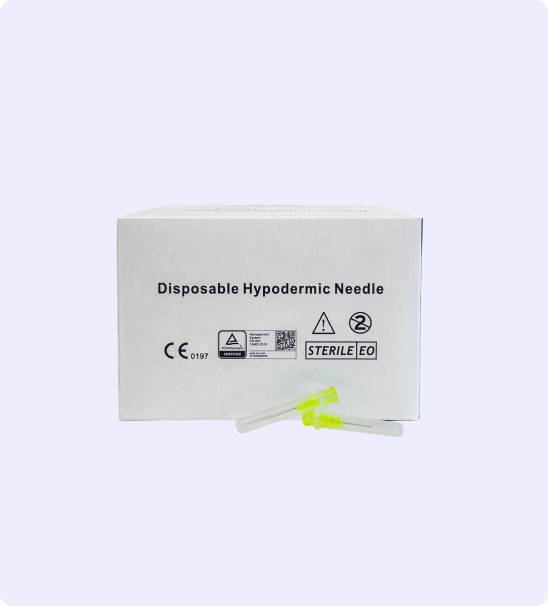
Innovations And Future Trends
Navigating through the challenges in the medical industry has paved the way for groundbreaking innovations and future trends that are set to revolutionize hypodermic needle manufacturing.
As we delve into this exciting new era, it is essential to acknowledge some of these innovative solutions that aim to address pressing concerns such as safety, efficiency, and patient comfort.
One such innovation gaining traction is needleless injections which utilize high-pressure technology to deliver medication directly through the skin without a traditional needle.
This approach not only minimizes pain for patients but also reduces the risk of infection due to cross-contamination, making it an attractive alternative for both healthcare providers and patients alike.
Another noteworthy development is smart syringes designed with various features like auto-disable mechanisms or dose-control systems that prevent reuse and ensure accurate dosing respectively.
These advancements have the potential to significantly impact the global medical landscape by enhancing overall patient care while adhering to strict safety standards.
Frequently Asked Questions
What Materials Are Commonly Used In The Manufacturing Of Hypodermic Needles, And How Are These Materials Chosen For Their Specific Properties?
When considering the materials used in manufacturing hypodermic needles, it’s essential to look at their specific properties and material sustainability.
Commonly chosen materials for these needle innovations include stainless steel and plastic polymers due to their durability, biocompatibility, corrosion resistance, and sterilization capabilities.
Stainless steel is often selected for the needle shaft because of its strength and sharpness retention qualities.
In contrast, various medical-grade plastics are utilized for the hub or syringe body as they offer flexibility and adaptability during production processes.
These materials not only ensure safety but also contribute to improved efficiency and patient comfort while minimizing environmental impact through sustainable practices.
How Do Manufacturers Ensure The Sterility Of Hypodermic Needles Throughout The Production Process, And What Measures Are Taken To Maintain This Sterility During Packaging And Transportation?
To address sterility challenges and ensure contamination prevention during the production of hypodermic needles, manufacturers implement strict quality control measures throughout the entire process.
These measures include maintaining a sterile environment by utilizing cleanrooms with controlled air filtration systems, regular sanitization procedures, and strict employee hygiene protocols.
Additionally, manufacturers employ automated manufacturing processes to minimize human contact and reduce potential contamination risks.
Once produced, hypodermic needles are packaged in individual or multi-unit packs using materials that provide an effective barrier against contaminants.
This packaging is often sealed through heat sealing or other methods to maintain sterility during transportation and storage until they’re used by healthcare professionals or patients.
Are There Any Significant Differences Between The Manufacturing Processes Of Disposable And Reusable Hypodermic Needles, And How Do These Differences Impact The Overall Cost And Environmental Impact Of The Products?
The primary differences between disposable and reusable hypodermic needles lie in their materials, manufacturing processes, and sterilization methods.
Disposable needles offer benefits such as lower initial cost, reduced risk of cross-contamination, and ease of use; however, they contribute to medical waste accumulation and may have higher overall environmental impact due to single-use disposal.
On the other hand, reusable needles require more robust materials for extended durability but involve drawbacks like higher upfront costs, repeated cleaning and sterilization procedures that consume resources, and potential risks associated with improper reprocessing or handling.
Ultimately, these factors significantly influence both the cost efficiency and ecological footprint of each type of needle.
What Steps Do Hypodermic Needle Manufacturers Take To Address Concerns Related To Needlestick Injuries And The Transmission Of Infectious Diseases, Both In Terms Of Product Design And User Education?
To address concerns related to needlestick injuries and the transmission of infectious diseases, manufacturers focus on needlestick prevention and infection control in both product design and user education.
Innovations in product design include safety-engineered devices such as retractable needles, sheathed needles, and self-blunting designs that minimize accidental exposure to sharps.
In addition to these design features, manufacturers also prioritize user education by providing training materials and resources for proper handling techniques, disposal methods, and adherence to standard precautions when using hypodermic needles.
This comprehensive approach helps protect healthcare workers from potential risks associated with needlesticks while ensuring patient safety.
How Do Needle Manufacturers Collaborate With Other Medical Device Companies, Healthcare Professionals, And Regulatory Authorities To Ensure That Their Products Meet The Evolving Needs And Standards Of The Medical Industry?
To ensure that their products meet the evolving needs and standards of the medical industry, needle manufacturers collaborate with other medical device companies, healthcare professionals, and regulatory authorities.
They work together to address manufacturing challenges, such as improving safety features and minimizing contamination risks, while also focusing on proper needle disposal methods to reduce environmental impact.
By partnering with these stakeholders, manufacturers can stay informed about new technologies, guidelines, and best practices in order to develop innovative solutions for safer and more efficient hypodermic needles.
Conclusion
It’s crucial for hypodermic needle manufacturers to prioritize the safety and sterility of their products. They must stay up-to-date with industry standards and collaborate with other medical professionals to ensure their needles meet the evolving needs of healthcare providers.
As consumers, we should appreciate the efforts made by these manufacturers in addressing concerns related to needlestick injuries and infectious diseases transmission.
By understanding the manufacturing process, we can make informed decisions when choosing between disposable or reusable needles based on cost and environmental impact factors.
If you want to experience the benefits of our hypodermic needles for yourself, head over to Face Med Store, where our products are trusted and used by their expert injectors. Don’t settle for anything less than the best – try Hydra Needles at Face Med Spa today!
